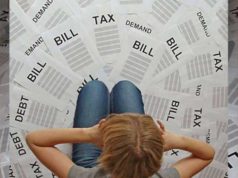
Ideally, bankruptcy court proceedings
will work to the benefit of debtors and creditors, allowing the former to
maximize the value of their possessions and cancel out their debts, and the
latter to recoup as much money as possible given the previous inability of
debtors to repay what they owe. Just as well, either the lenders or
bankrupt parties may find that justice was not served in a ruling by the
bankruptcy court judge. In this instance, and especially
for bankrupt individuals, there is recourse available
for a given decision.
Following a hearing in bankruptcy court,
the logical next step is a bankruptcy appellate panel (BAP). Although not an institution in all
circuits, bankruptcy appellate panels have an important function in those
regions that do include it. Some notes on the use of bankruptcy appellate
panels in American history:
In terms of the creation of a special
division to handle appeals after an initial bankruptcy court finding, the
origins of appellate panels for this purpose lie in previous amendments to
bankruptcy law enacted in the last 30 years. Bankruptcy appellate panels are presided over by three
bankruptcy judges who also serve their jurisdictions on a regular basis. As
with any bankruptcy court, these appellate panels are guided to a large
extent by the Federal Rules of Bankruptcy Procedure.
However, as BAPs are a branch of the U.S.
Court of Appeals system, they are also subject to the constraints of the
Federal Rules of Appellate Procedure. Of a potential added benefit
to bankrupt petitioners, individual court rules also will impact a case or
motion upon appeal to a BAP.
It should be noted that
appeals do not necessarily need to follow the
progression from bankruptcy court to appellate panel and so on and so
forth. Following a summary judgment out of their favor,
bankrupt individuals may elect to file their motion of appeal with a
district court instead of a bankruptcy appeal court. From there, appeals made
by a district court go to the circuit court, or in some instances, will go
directly from bankrupt court to the circuit court of appeals.






















